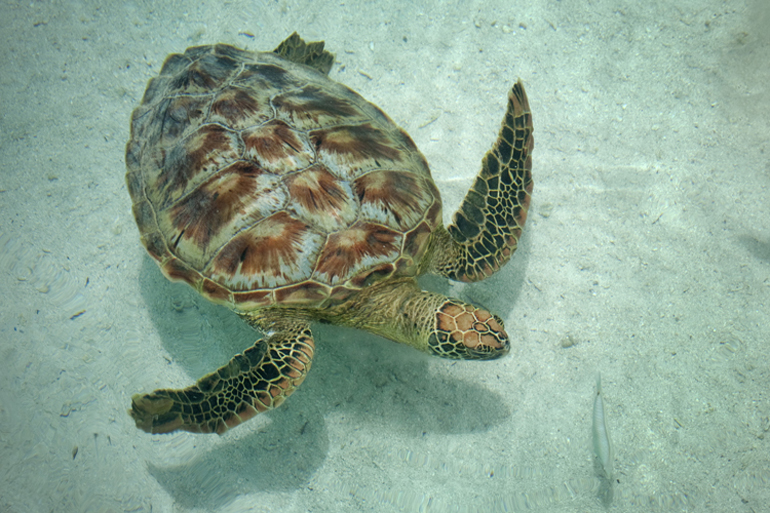
Like many of the world's charismatic megavertebrates (whale, elephant, lion, tiger), the sea turtle is in a race for survival. Once so abundant that Columbus described the Caribbean as a "sea of floating rocks," all eight species are now threatened or endangered. There is one, and only one, reason for this predicament-man's plundering of the oceans.
The sea turtle's dilemma demonstrates just how awesome is man's dominion over the earth. Some turtle species live in shallow water where he trolls his clingy and ubiquitous nets. They don't have a chance. But even deep water species are not out of harm's way. Turtles must periodically surface for air and all too often they encounter something human along the way. It's those nets again. Other species are pelagic, or open ocean, which would seem pretty safe. Right? Yet females must come to shore one night a year to lay their eggs. Guess who's waiting for them.
For the sea turtle life begins tough and gets tougher. Nesting beaches are buried under condominiums. Man eats the eggs as a delicacy and as an aphrodesiac (just what our species needs). Hatchlings are gulped down like hors d' oeuvres by birds and other assorted beasts. And the occasional turtle that survives to adulthood swims daily through an obstacle course of dangers, mostly man-made, and mostly nets.
The plight of the sea turtle has not gone unnoticed. Concerned citizens around the world now feverishly protect turtles and their nests. Turtle-watching ecotourism is promoted as are alternatives to turtle protein. Such efforts will be necessary if this gentle giant is to survive into the 21st century.